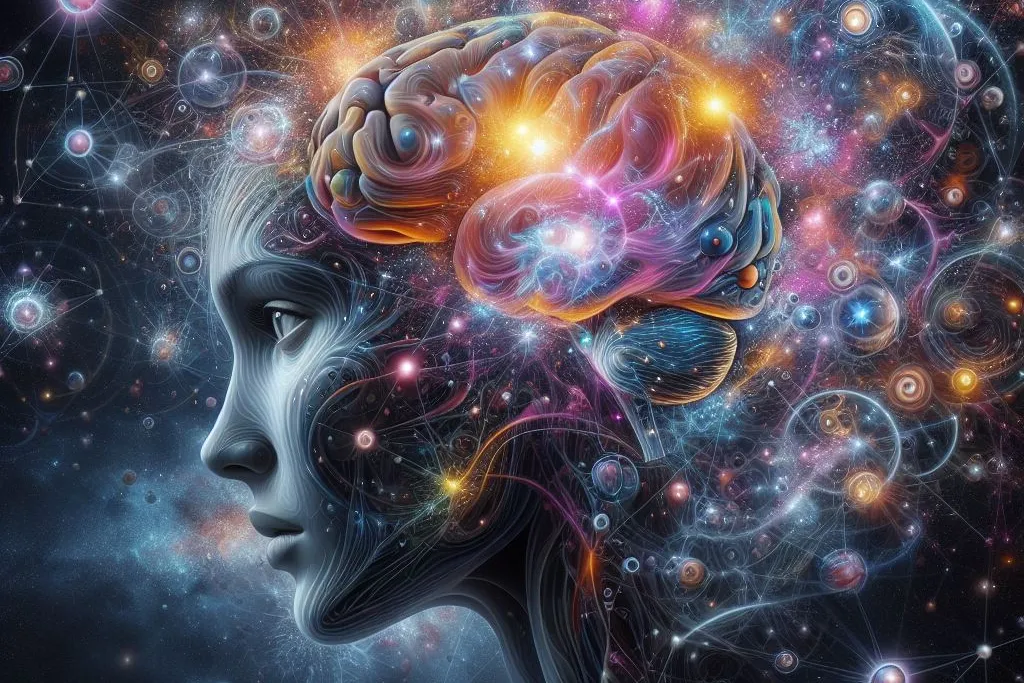French and Canadian researchers proposes a fascinating connection between the human brain and the universe.

Our brains, composed of the same fundamental particles as stars, might share a surprising similarity: a tendency towards maximized disorder.
This concept aligns with the principle of entropy, which describes a system’s natural progression from order to disorder. Imagine an egg – with a separated yolk and white, it exhibits low entropy. Scrambled, however, it reaches a state of high entropy. The study suggests that consciousness itself could be an unintended consequence of the brain increasing its information content, essentially mirroring the universe’s entropic state.
For centuries, scientists have grappled with the enigma of human consciousness – our ability to be aware of ourselves and the environment. This research presents a novel perspective on its origin, prompting further exploration into the “when,” “where,” and “why” of consciousness.
A compelling theory proposed by physicists suggests the Universe is experiencing a constant shift from order to disorder, a concept termed entropy. This aligns with the second law of thermodynamics, indicating a one-way progression of time.
This principle has been applied to investigate potential patterns in brain organization during conscious states. Researchers at the University of Toronto and Paris Descartes University employed statistical mechanics, a form of probability theory, to analyze neural networks within nine participants’ brains, including individuals with epilepsy.
The study focused on neuronal synchronization – the coordinated oscillation of neurons – to determine the interconnectedness of brain cells. Two datasets were compared: connectivity patterns during sleep versus wakefulness, and activity during epileptic seizures versus normal, alert states.

Intriguingly, a similar trend emerged in both scenarios. Brains exhibited higher entropy during states of full consciousness. The research team suggests this finding aligns with the notion of consciousness being an “emergent property,” arising from a system that strives to maximize information exchange.
It’s important to acknowledge limitations. The small sample size (nine participants) makes conclusive trend identification challenging, as individual brain responses varied slightly across different states. Additionally, the current understanding leans heavily on speculation.
An external physicist, Peter McClintock, highlighted the intriguing nature of the results while emphasizing the need for replication with a larger group. Further experiments encompassing various brain states, such as anesthesia, are also recommended.
Despite these limitations, the study serves as a valuable springboard for further investigation, potentially leading to a novel hypothesis regarding the source of consciousness in the brain. Our understanding of how brain organization influences consciousness is in its infancy, but it presents a captivating area for exploration. Ultimately, it serves as a reminder of our shared connection to the fundamental laws governing the Universe.
https://journals.aps.org/pre/abstract/10.1103/PhysRevE.94.052402
Abstract
It is said that complexity lies between order and disorder. In the case of brain activity and physiology in general, complexity issues are being considered with increased emphasis. We sought to identify features of brain organization that are optimal for sensory processing, and that may guide the emergence of cognition and consciousness, by analyzing neurophysiological recordings in conscious and unconscious states. We find a surprisingly simple result: Normal wakeful states are characterized by the greatest number of possible configurations of interactions between brain networks, representing highest entropy values. Therefore, the information content is larger in the network associated to conscious states, suggesting that consciousness could be the result of an optimization of information processing. These findings help to guide in a more formal sense inquiry into how consciousness arises from the organization of matter.